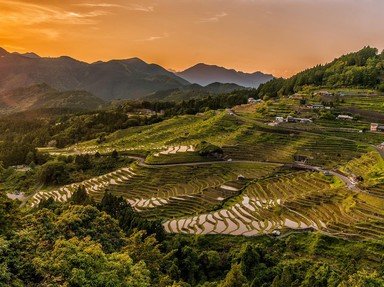Quiz Answer Key and Fun Facts
1. Udon-kun catches the car ferry from the mainland to Ogi Minato Port and rushes to the Tub Boats to take a tour of the Ogi Coast. What is special about the tubs?
2. Udon-kun heard that Sado Island has its own "Blue Grotto" formed by lava rock. Which cave does he intend to visit?
3. Udon-kun visits the Akagameiwa Rock, which was, according to legend, formed by what creature that rescued a fisherman who was lost at sea and let him and his boat ride on its back to return to port?
4. Udon-kun stepped into the Chokokuji Temple on Sado Island to see the Sado Daikannon. He was staggered to see a 'prime' example of a goddess with how many heads?
5. Udon-kun would like to attend an onidaiko cultural performance on Sado Island. Which of the following props would help him blend in with the performers?
6. Udon-kun finds his way to his hotel. He is confused, though, when he arrives at the Futatsugame Tombolo. He is looking at a sandy isthmus, but what did he expect to find, a term that originated from a Latin word meaning mound?
7. The Sado cedar forests are made up of trees of unusual character. What is the main reason behind their shapes?
8. Udon-kun next travelled to Onogame, a gigantic monolith on the northern shore of Sado Island that rises 167m from the ocean. He wonders how the rock came into being?
9. Udon-kun makes his way across Machikobashi Bridge to the observation deck at Senkaku Bay Ageshima Park, positively beaming having just passed what nearby attraction?
10. Udon-kun decides to visit the Aikawa Traditional Skills Museum as he wants to participate in a hands-on experience. From where did the clay he uses to throw his pots come?
Source: Author
VegemiteKid
This quiz was reviewed by FunTrivia editor
agony before going online.
Any errors found in FunTrivia content are routinely corrected through our feedback system.
